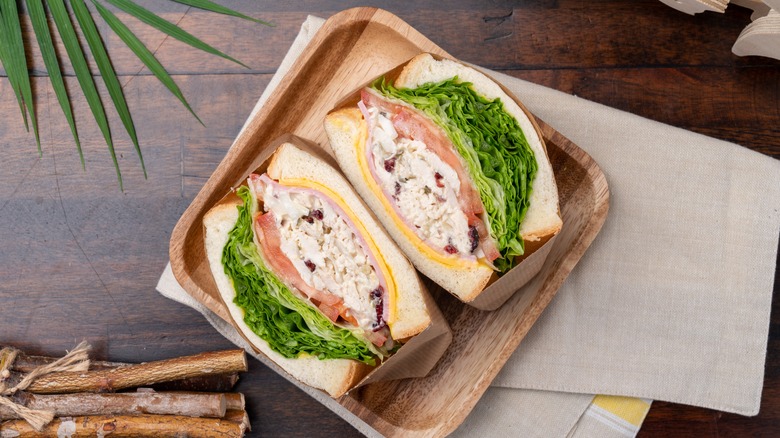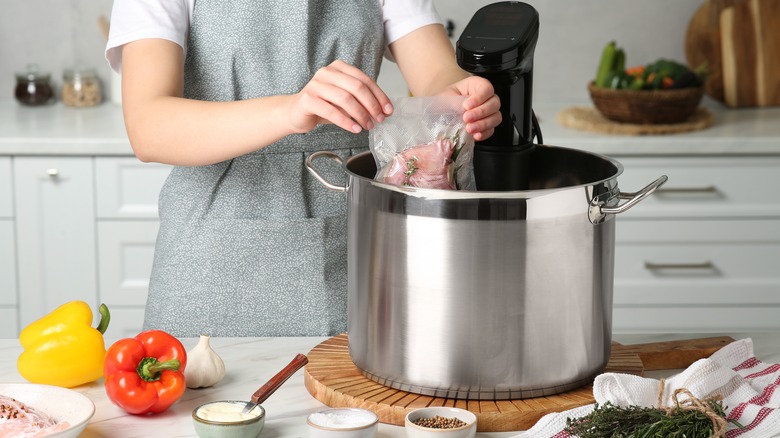The Ideal Cooking Method For Juicy (But Not Watery) Chicken Salad
Putting together the perfect chicken salad requires many elements, but getting the chicken right is arguably the most crucial one. While a quick poach, bake, or pan-fry is common, these methods can often result in chicken that is dry, tasteless, and even watery rather than tender and juicy. But with sous vide chicken salad, your chicken salad is sure to come out with a desirable texture that will take your dish to a tasty new level.
Sous vide is a French term that translates to "under vacuum." This refers to the technique of vacuum-sealing the food in a plastic bag and then cooking it at a precisely controlled temperature in a water bath using an immersion circulator. Since the temperature is low, stable, and maintained over a long period, there's little risk of the chicken being undercooked or overcooked. You can throw out your worries about watery or dry meat. Instead, it cooks perfectly from the outer edge to the center inside. This and the locked-in moisture ensure a fall-apart tender texture that's also delectably succulent.
Along with the juiciness comes enhanced flavor absorption. Whether it's a marinade or a dressing toss, rest assured your chicken will embrace the external flavors better than ever. In a classic chicken salad, the meat's tenderness fares excellently with the creamy mayo-base dressing, creating a melt-in-your-mouth sensation. That said, it's also enjoyable when met with curry chicken salad's intensity or drenched in the red wine vinaigrette of a Greek rendition.
A few things to keep in mind when you sous vide
For those who already have the sous vide machine at home, the process should be a total breeze. Coat the chicken with spices and herbs if you prefer, but limit the aromatics because they might end up tasting a bit raw. Don't go too heavy-handed on anything else either because it might turn out more intense than you expect. Just a pinch of salt and pepper will do, but something more elaborate like lemon and tarragon would also work.
Then, vacuum-seal the package, and cook it at around 145 or 150 degrees Fahrenheit for one to two hours. You can even cook in a large batch to meal prep for the whole week. If you don't have a vacuum sealer, try the water displacement method by partially sealing the ziplock bag, leaving just an inch open, and then submerging it in water to push the air out. Just before it completely goes into the water, seal that open edge off and pull the bag out.
Without the immersion circulator, you can still sous vide using the stovetop, although the outcome won't be entirely the same because the temperature will inevitably fluctuate. You'll need to mount the digital thermometer to the side of the pot, heat the water to the desired temperature, put the chicken in, and adjust the temperature as it cooks. Once you've got the chicken, the rest of the salad should come together in no time!

